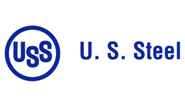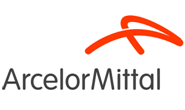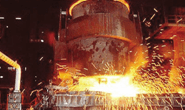Steel Mills

U.S. Steel Bullish on the Market and its Future with Big River Steel
Written by Sandy Williams
January 29, 2021
“What a difference a quarter can make,” exclaimed U.S. Steel President and CEO David Burritt during the opening of the fourth-quarter 2020 earnings call. The company posted positive net earnings of $49 million following a net loss of $234 million in the third quarter and a net loss of $688 million in Q4 2019. Net sales for the latest quarter were $2.6 billion.
“The team at U.S. Steel created unprecedented value in the trough by continuing our transformation into a world-competitive, Best of Both steel producer,” said Burritt. “With Big River Steel now fully part of the U.S. Steel portfolio, we are well positioned to drive significant earnings growth while delivering our customers an unmatched value proposition. Our future starts now and we cannot wait to show the world the value that the only Best of Both steel company can create.”
U.S. Steel said it accomplished several of its primary goals in the midst of a sweeping pandemic in 2020:
- The company monetized its excess iron ore by an option agreement with Stelco in April and struck a third-party merchant pellet agreement with Algoma for 2021.
- The Fairfield EAF was commissioned in October and is being used to in-source substrate for seamless pipe.
- Strong demand allowed the restart of the #4 blast furnace at Gary Works in Q4, the Keetac iron ore mine in December, and in January the third blast furnace in Slovakia.
- And, most important to U.S. Steel, the acquisition of Big River Steel was completed along with a successful commissioning and ramp of the Phase 2 EAF expansion. U.S. Steel went from zero EAFs to three in a very short time.
Big River Steel shipped just over 180,000 tons in December and is already near a 90 percent utilization rate for the Phase 2 expansion, the company reported. EBITDA in December totaled around $30 million, and Big River is expected to generate EBITDA margins in the mid to high teens. Trials on three advanced high-strength steels were completed since announcing the call option on Big River, bringing the number of prequalified new steels from 11 to 14.
Burritt emphasized that Big River Steel’s teammates are the minimill experts and U.S. Steel is trusting their capabilities. He added, “For the most part, they run their operations and then we make sure that we work together to get the benefits of U.S. Steel’s research, its iron ore and its capabilities for our bigger footprint and size.”
The company is now focusing on reducing capital intensity through identifying and prioritizing capital projects that align with that reduction. For the time being, the investments at Mon Valley, Gary and the Dynamo line are on pause. “We’re really looking at our entire resource allocation process and seeing where we can create the most value in a much leaner way.”
U.S. Steel has capitalized on the divesting of non-core real estate assets and expects more sales in the future.
U.S. Steel’s confidence in 2021 is supported by continuing improvement in demand, strong spot prices and industry utilization rates moving toward pre-COVID levels.
“We have not seen a surge in imports yet, but we’ll continue to monitor the situation,” said Burritt. On the topic of trade, Burritt said that keeping Section 232 measures in place is a “no brainer” with a Buy America philosophy.
Rich Fruehaulf, chief strategy and development officer, added that a strong steel industry is an American issue. “All indications are that the Biden administration recognizes that and they are going to reinvest in manufacturing. And if we get an infrastructure bill, that would be tremendously helpful to the industry.”
Re-entry to the Paris Climate Agreement is aligned with U.S. Steel’s greenhouse gas reduction goal and its commitment to sustainability. With Big River currently the only Leed certified steel mill in the world, customers can count on U.S. Steel meeting “customers’ growing demand for green sustainable steels that can help them meet their own sustainability targets,” said Burritt.
The recent disruptions at OEMs due to semiconductor shortages have not impacted U.S. Steel’s orders. Accelerating demand in auto and low inventory is expected to be positive for the auto order book.
Looking forward, a significant improvement is expected in the flat-rolled segment due to higher average realized selling prices, although steel shipments will be relatively flat.
Mining operations are expected to be impacted by the seasonal closure of the Great Lakes shipping lanes.
The tubular segment is still lackluster with an EBITDA loss of $21 million, but showed improvement in Q4. “Customer demand is improving resulting in higher volumes, but selling prices remain under pressure,” said CFO Christie Breves. “As a result, we expect similar performance in the first quarter compared to the fourth quarter.” The flexibility of the EAF will allow for adjustments to demand. The segment had record premium connection shipments in 2020 and expects to set a new record in 2021.
In Europe, higher average realized selling prices and increased shipments will be offset by higher raw material costs, particularly for iron ore. In addition, higher CO2 credit costs are expected in the first quarter related to the restart of the #3 blast furnace. Results for Q1 are expected to be similar to the fourth quarter.
Big River Steel’s results will be fully consolidated in first quarter results, and the strong December performance is expected to continue.
“I am bullish about the strong market we are seeing and we are positioned more strongly than ever to capitalize,” said Burritt. “Our flat-rolled business is vertically integrated and benefits from a balanced commercial contract mix, supported by a revitalized portfolio of differentiated assets. We now own Big River Steel, the world’s first flex mill, merging the superior capabilities of integrated steelmaking with the agility of minimill steelmaking.
“A strong market backdrop combined with our Best of Both footprint has us confident that 2021 will be a year of significant value creation and earnings growth.”

Sandy Williams
Read more from Sandy WilliamsLatest in Steel Mills

USW seeks clarity on plans for Granite City Works
The United Steelworkers union has asked U.S. Steel to elaborate on its Granite City Works plans following reports that the steelmaker is ending processing at the facility.

Nucor maintains plate prices, opens October order book
Nucor aims to keep plate prices flat for a seventh straight month with the opening of its October order book.

ArcelorMittal Mexico to import from sister mills as it works to resume DRI production
ArcelorMittal has partially restarted operations at its direct reduction plant in Lazaro Cardenas, Michoacan. An explosion on Aug. 18 rocked the massive steelworks on Mexico’s Pacific coast, impacting production of direct-reduced iron (DRI).

Fall maintenance outages are coming in hot
Labor Day has passed, the sun is starting to set a little earlier each day, and cooler weather has begun to find its way down to many of us across North America. And you know what that means for the steel industry… Fall maintenance outages!

AISI: Domestic steel production ticks up
US raw steel production ticked up in the week ending on Sept. 6 after a decrease the week before, according to the most recent data from the American Iron and Steel Institute (AISI).

